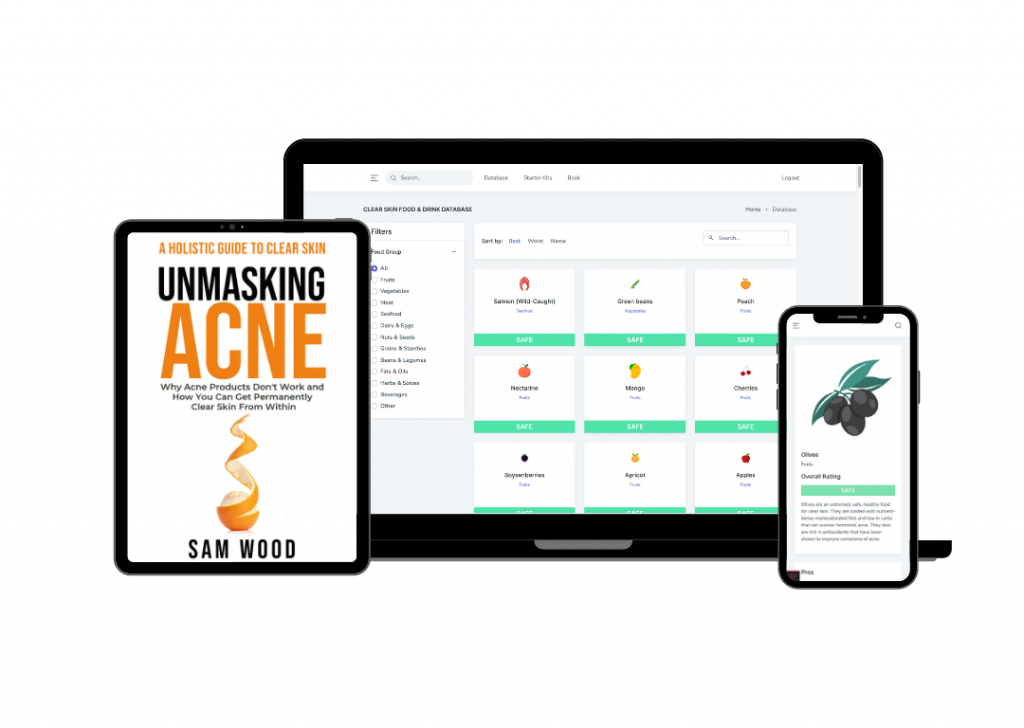Does anyone feel like their face is a never-ending battle with blackheads? Even if you think you’re in the clear, the pores underneath pose a new set of challenges. Removing blackheads, either by using extraction strips, waxing or simply squeezing them out, can open up your pores.
At that point, not only do they seem larger, but they’re also more susceptible to dirt and oil. And as much as we all hate dealing with blackheads and the subsequent removal aftermath, it’s important to take care of your skin so that your pores can become less visible and less likely to attract grime in the future.
What Are Blackheads?
Blackheads aren’t pimples – they are a particular kind of acne. Blackheads are open bumps that fill with dead skin and excess oil. They look like dirt in the bump, but an irregular light reflection causes the dark spots off the clogged follicle.
Blackheads form when the pores become clogged with sebum (excess oil) and dead skin cells. Squeezing blackheads can be very tempting. Nevertheless, this might cause some problems. You may not remove the entire blackhead or you might even push the blackhead further into your skin, which can additionally irritate your skin. If the blackhead is not removed, it will often turn into a whitehead which is similar but more noticeable and can be painful.
How to Close Open Blackhead Pores?
Before we get into the details, it’s worth noting that you can’t close your pores entirely. They’re tiny openings in your skin that release oil and sweat. This, in turn, allows your skin to breathe and get rid of toxins. But what you can do is refine their appearance so they’re less noticeable. Here’s how you can do that.
Start With a Gentle Cleanser
Ever notice how blackheads tend to smell? That’s because they’re clogged pores full of sebum, dead skin cells, and bacteria. So, the first step to taking care of your post-blackhead removal skin is to prevent further buildup by cleansing your face with a non-irritating and fragrance-free cleanser is the first step in the right direction.
Typically, the best cleansers for blackheads contain hyaluronic acid or glycerin, which are both ingredients that help to hydrate and plump the skin. The former might be especially beneficial if your skin is feeling dry and irritated from the blackhead removal process.
Use two or three pumps of cleanser and massage it into damp skin using circular motions. Make sure to spend enough time on areas with larger pores. Rinse the cleanser off with lukewarm water and pat your skin dry with a clean towel.
Contrary to popular belief, ice-cold water won’t do much to tighten your pores. It might even irritate your skin further by causing redness and inflammation. The contrast in temperature between the water and your face can also cause broken capillaries, small blood vessels that become visible just below the surface of your skin.
In any case, using a cleansing solution that’s too hot or too cold will only aggravate your skin further, so always opt for lukewarm water. This won’t cause additional inflammation and will help soothe your skin.
Some dermatologists even recommend double cleansing at night. In other words, you can use two different products, starting with an oil-based cleanser followed by a water-based one. The idea is that the oil-based cleanser will remove makeup and sebum from your skin while the second cleanser will get rid of any remaining residue.
If you have sensitive skin, however, double cleansing can be too harsh. In that case, you can simply stick to a single product that suits your skin type.
Apply a Pore-Refining Serum or Treatment
After cleansing your skin, it’s time to apply a pore-refining serum or treatment. Look for premium quality products that contain ingredients like niacinamide, retinol, glycolic acid or lactic acid. All of these ingredients help to slough off dead skin cells and smooth out the skin’s surface.
Apply the serum or treatment with your fingertips, using only a pea-sized amount. Avoid the area around your eyes as it’s the most sensitive part of your face. Instead, focus on areas that show enlarged pores, such as your forehead, nose and chin.
Exfoliate Regularly
Exfoliating your skin essentially means getting rid of dead skin cells that can accumulate on the surface and make your pores appear larger or prompt the appearance of blackheads.
Physical exfoliants were once the only option available but nowadays, there are also chemical ones that can be just as effective, if not more. Chemical exfoliants usually come in the form of serums or peels and contain ingredients like BHA (beta hydroxy acid) or AHA (alpha hydroxy acid).
So instead of scrubbing away at your skin with a physical exfoliant and potentially causing micro-tears, you can opt for a gentler approach with a chemical one. Simply apply it to your face, leave it on for the recommended time on the label and wash it off with lukewarm water.
You can exfoliate your skin once or twice a week, depending on your skin type. Don’t do it more than that, though, as it can irritate your skin and cause redness, dryness or even breakouts.
Use a Pore-Minimizing Mask
After you’ve exfoliated, you have a clean slate to work with, which is the perfect opportunity to use a pore-minimizing mask. These masks usually contain ingredients like clay or charcoal, which help to absorb excess oil and shrink the appearance of pores.
Apply a generous layer of the mask to your face, avoiding the area around your eyes, and leave it on for about 15 minutes. You’ll notice that the mask will start to harden as it dries. Sometimes your pores might be visible through the mask, which is completely normal.
Once the 15 minutes are up, wash the mask off with lukewarm water and dry your skin by patting it gently with a clean towel.
Dab Some Moisturizer
It’s no secret that a well-hydrated complexion appears plumper and smoother, resulting in smaller-looking pores. Therefore, it’s important to apply a moisturizer to your face every day, even if you have oily skin.
The key is to find a lightweight, non-comedogenic product that’s suitable for your skin type. Apply it to your face and neck after cleansing and applying serum or treatment.
Wear Sunscreen
Did you know that sunscreen isn’t just for the beach? Wearing SPF on a daily basis is a must for everyone, as it can help prevent sun damage, which can lead to visible pores, aging and even skin cancer.
When shopping for sunscreen, make sure to look for a product that has an SPF of 30 or higher and is water-resistant. Apply it generously to your face and neck every morning before heading out for the day.
You can even get tinted sunscreen formulas that can act as a primer or light foundation, providing you with an added layer of sun protection while also blurring any imperfections. Not only will your skin be protected from the sun, but it will also have a healthy-looking glow.
Change Your Pillowcase Regularly
Your pillowcase can accumulate a lot of dirt, sebum, and sweat over time, which can then transfer to your face and clog your pores. To avoid this, change it at least once a week or more often if you can.
It’s also a good idea to opt for pillowcases made of natural fabrics like cotton, as they’re less likely to irritate your skin. If you have sensitive skin, look for hypoallergenic options as well.
Check In With Your Dermatologist
If you’ve tried all of the above and you’re still struggling with large pores, it might be time to see a dermatologist. They can help you figure out what’s causing your pores to appear larger than normal and recommend further steps. Laser therapy or microdermabrasion are two possible options, despite being more invasive and expensive.
In the meantime, continue with your at-home skincare routine and make sure to protect your skin from the sun. Doing so can help improve the appearance of your pores and give you a healthy-looking complexion.
Bottom Line
Overall, blackheads and visible pores are common concerns for many individuals. For some, they may be a source of insecurity and can affect self-confidence, while for others, they may turn into a lifelong battle.
Fortunately, several things can be done to reduce blackhead formation and the appearance of pores. From a carefully-curated skincare routine to regular check-ups with a professional, you’ll be on your way to smooth, poreless skin in no time.

